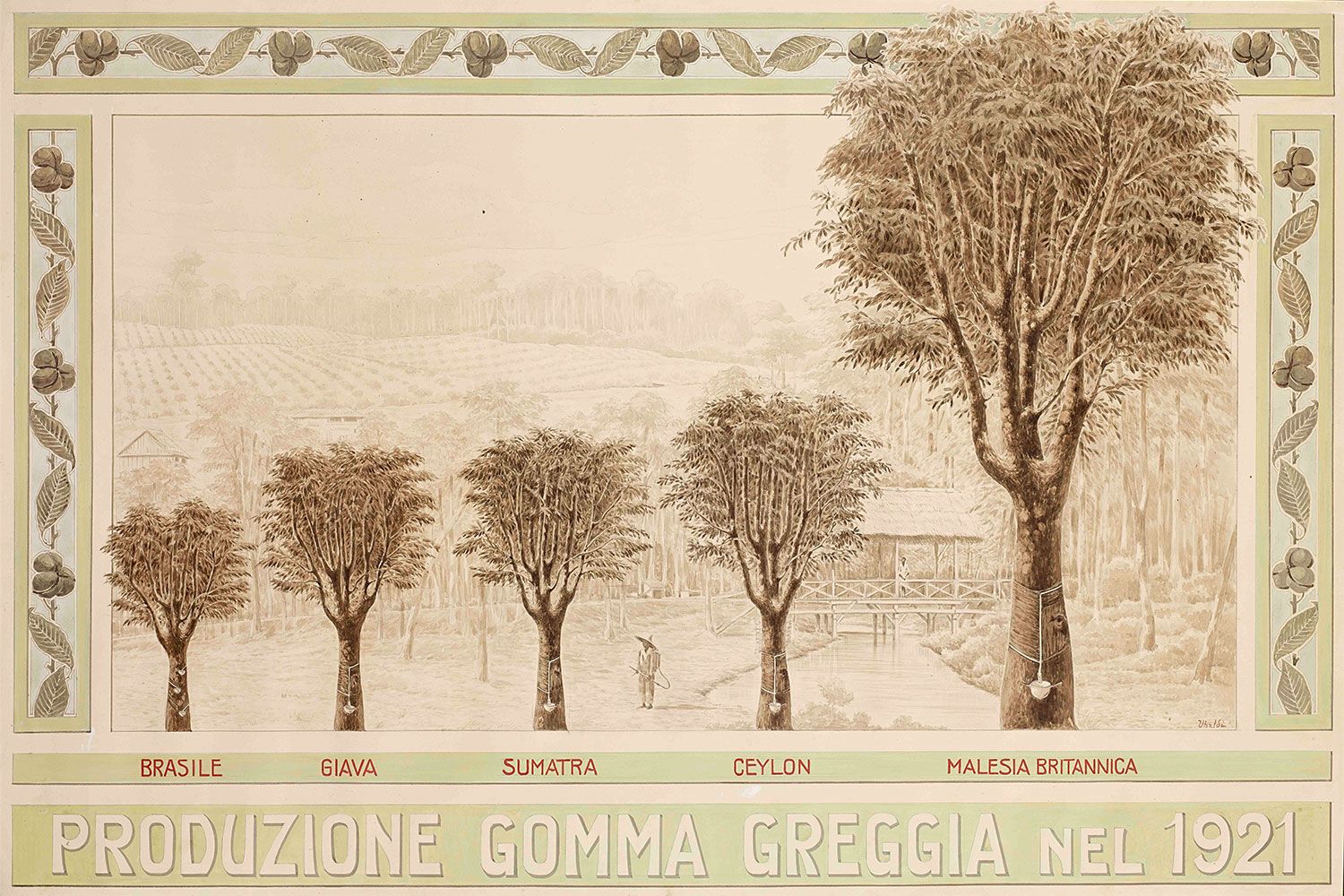Pirelli: Sustainable Culture
Against a sweeping background history, the Pirelli: Sustainable Culture exhibition, which was held at the Pirelli Foundation in 2016, illustrated the cultural approach that the Pirelli Group has always had to environmental and social sustainability.
It ranged from the earliest studies of natural rubber from the plantations in Java to Giulio Natta’s experiments on synthetic rubber in the late 1930s, through to the formation of an ecological approach in the 1970s and today’s solutions that are extremely eco-friendly, in terms of both the processes and the tyre itself.
Pirelli: Sustainable Culture. April 2016 - September 2017
A Sustainable Culture: this was the title of the exhibition held at the Pirelli Foundation in 2016. The exhibition illustrated this complex and now highly topical subject on various levels: from the company’s historic approach to research into innovative materials through to the effort to design factories of low environmental impact, to the development of eco-sustainable tyres and global ethics and social sustainability issues.
Several stories, one inside the other: natural rubber and alternative raw materials, the energy targets reached by Pirelli factories around the world, and Renzo Piano’s project – inspired by the concept of the “beautiful factory” – for the Industrial Centre in Settimo Torinese. And also the Cinturato P7 Blue with low resistance to rolling and futuristic solutions to make global and sustainable mobility a reality.
Today’s milestones have been achieved by an authentic “culture of sustainability”, which have gradually taken shape over the course of the company’s century and a half of existence: a science and culture that the Historical Archive preserves as the backbone of the company.
















